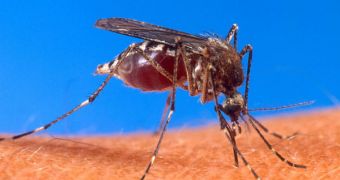Experts may have just created one of the most complex and, ironically, useful weapons in the world, designed to address a universal problem – mosquitoes. These tiny insects not only cause discomfort and itching, but are also the favorite “ride” for deadly viruses such as malaria and the dengues fever, which severely affect parts of Africa and other regions of the globe. Scientists want to use the new invention to protect sensible areas of several countries, at first, and then the entire population, until the “balance” between the number of mosquitoes and humans is restored.
If the incidence of malaria alone could be reduced around the world, then a million people wouldn't have to die for nothing each year. “We'd be delighted if we destabilize the human-mosquito balance of power,” former Lawrence Livermore National Laboratory astrophysicist Jordin Kare, who has been the one to build the new laser from off-the-shelve parts bought on eBay, says. However, the idea is not original, as a Wall Street Journal article shows that astrophysicist Lowell Wood, who worked with the father of the hydrogen bomb, Edward Teller, was the one to think of it and propose it first.
The system that has just recently been developed has a pretty basic construction. It features a few flashlights, which are used to illuminate the area of interest, as well as a lens from a 35mm camera, for zoom and precise identification. Then, of course, there's the laser, which is connected to a computer that acts like its brain. The lens is linked to the PC as well, and a computer software is in charge of perfectly synchronizing the two for an optimum accuracy.
At first, when a mosquito passes in front of the flashlights, it projects a shadow on the wall. The lens records the pattern of the wings and sends the images to the computer, which decides if the creature is a male or a female. It does that based on the frequency of the wings' beating. Then, it gives the “aim” command to the laser, which then focuses on the insect. The “fire” order comes milliseconds after, and each of the kills is marked through a gunshot sound.
Of course, this is just a basic design, but its essetnial principle could be refined into a more complex device that could finally make ensure that mosquitoes are at least kept out of hospital and official buildings, as well as airports, where a lot of people gather at one time and make for the perfect viral spawning ground.

 14 DAY TRIAL //
14 DAY TRIAL //